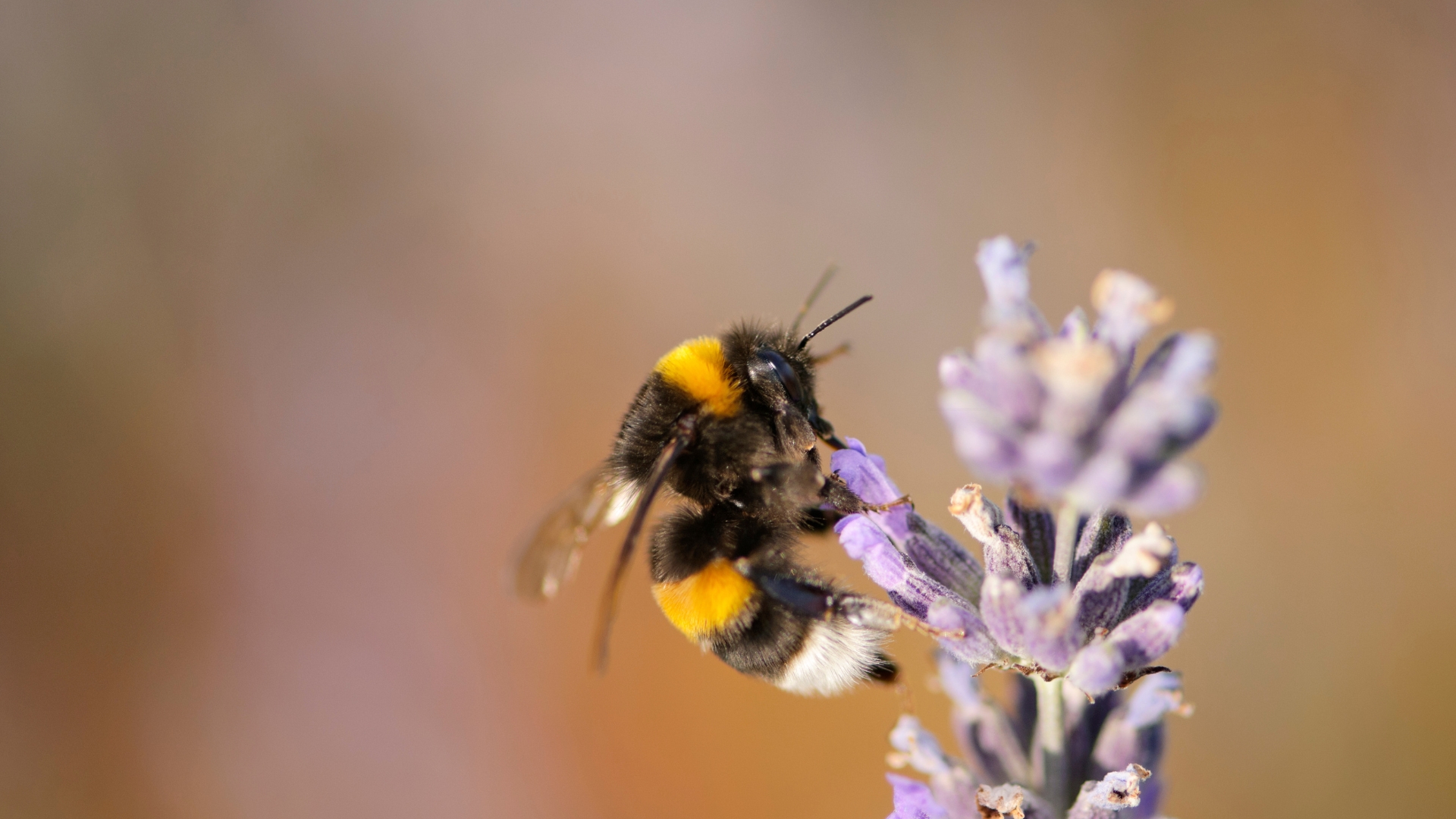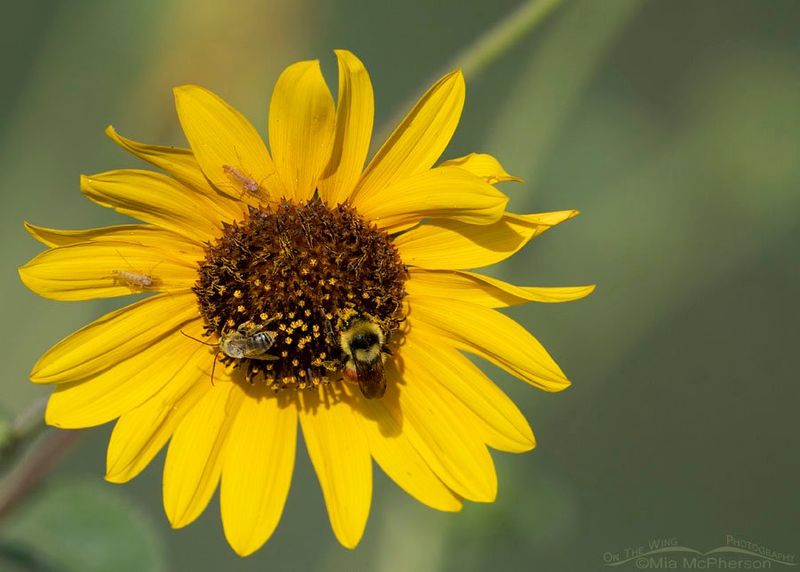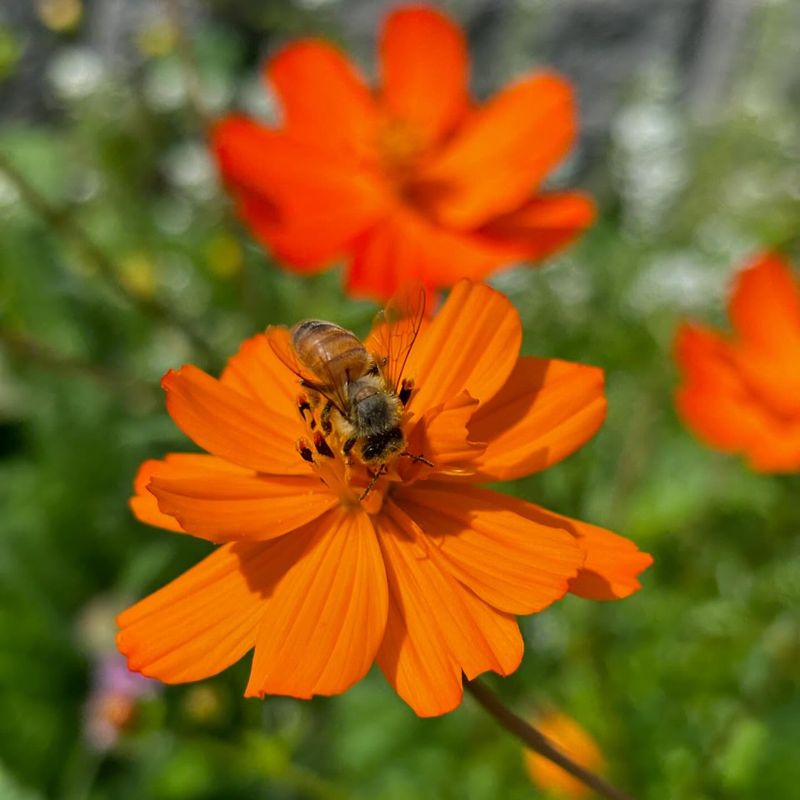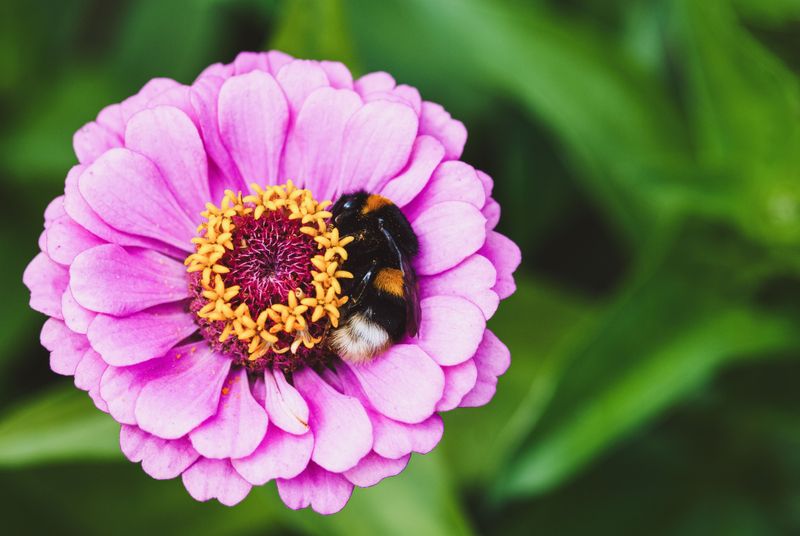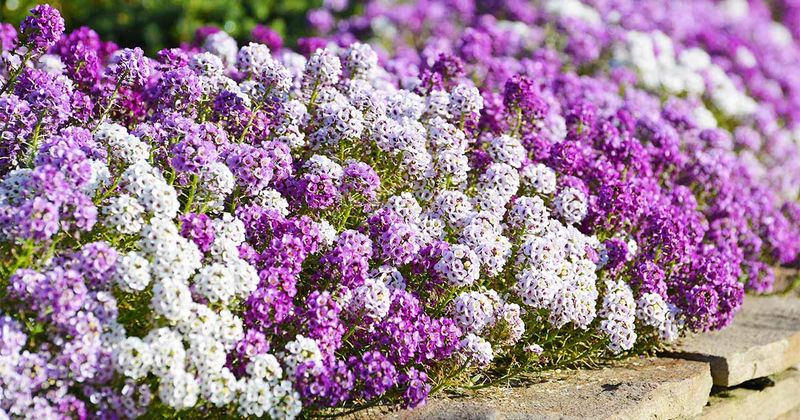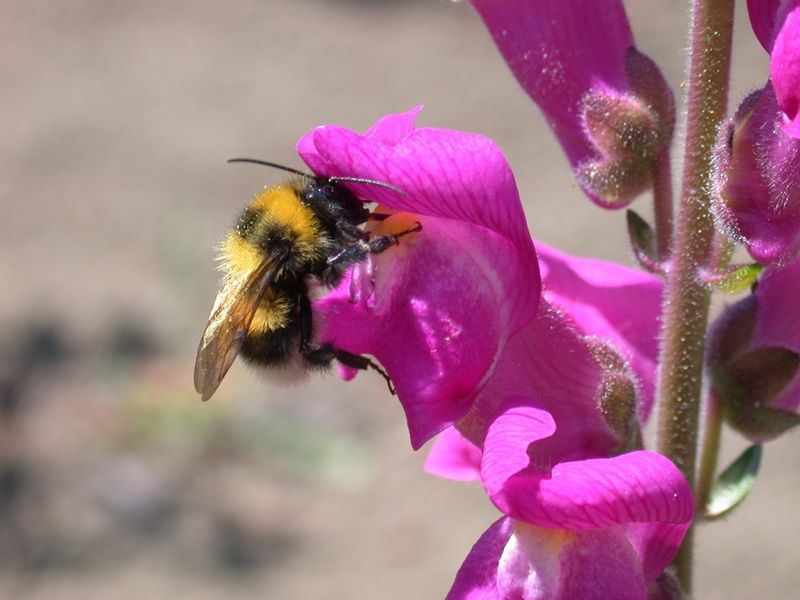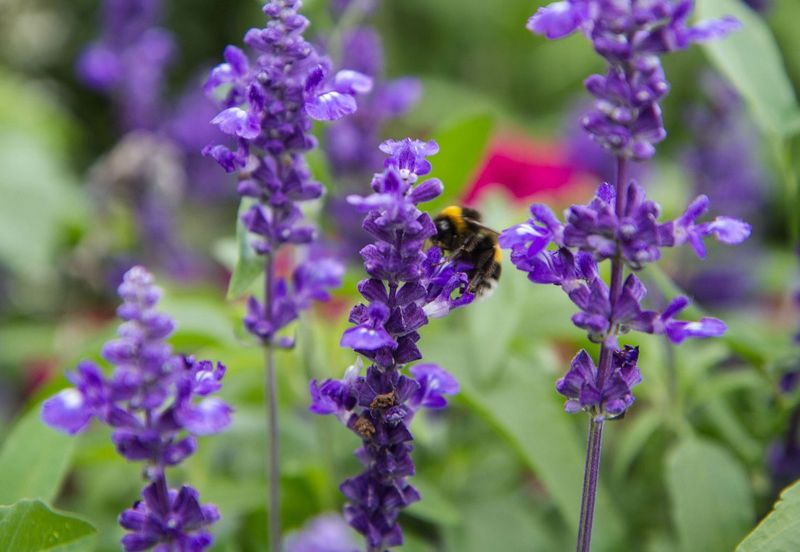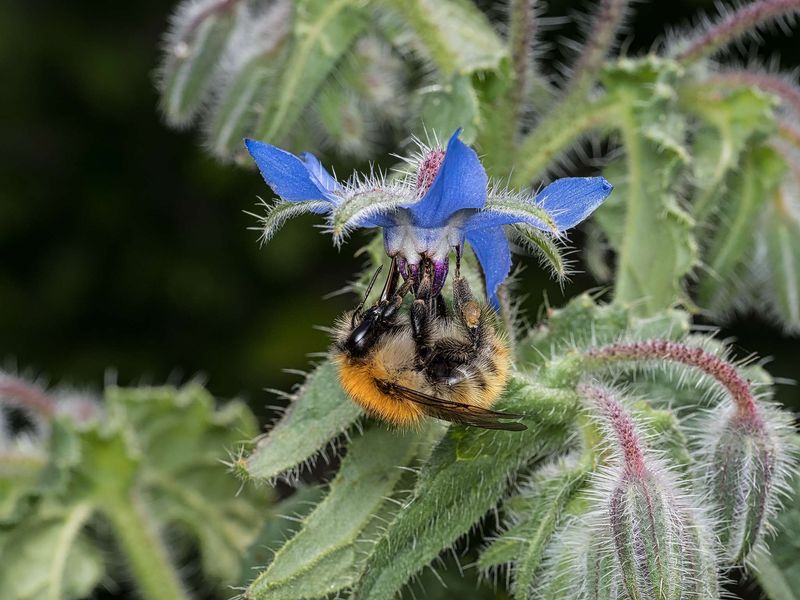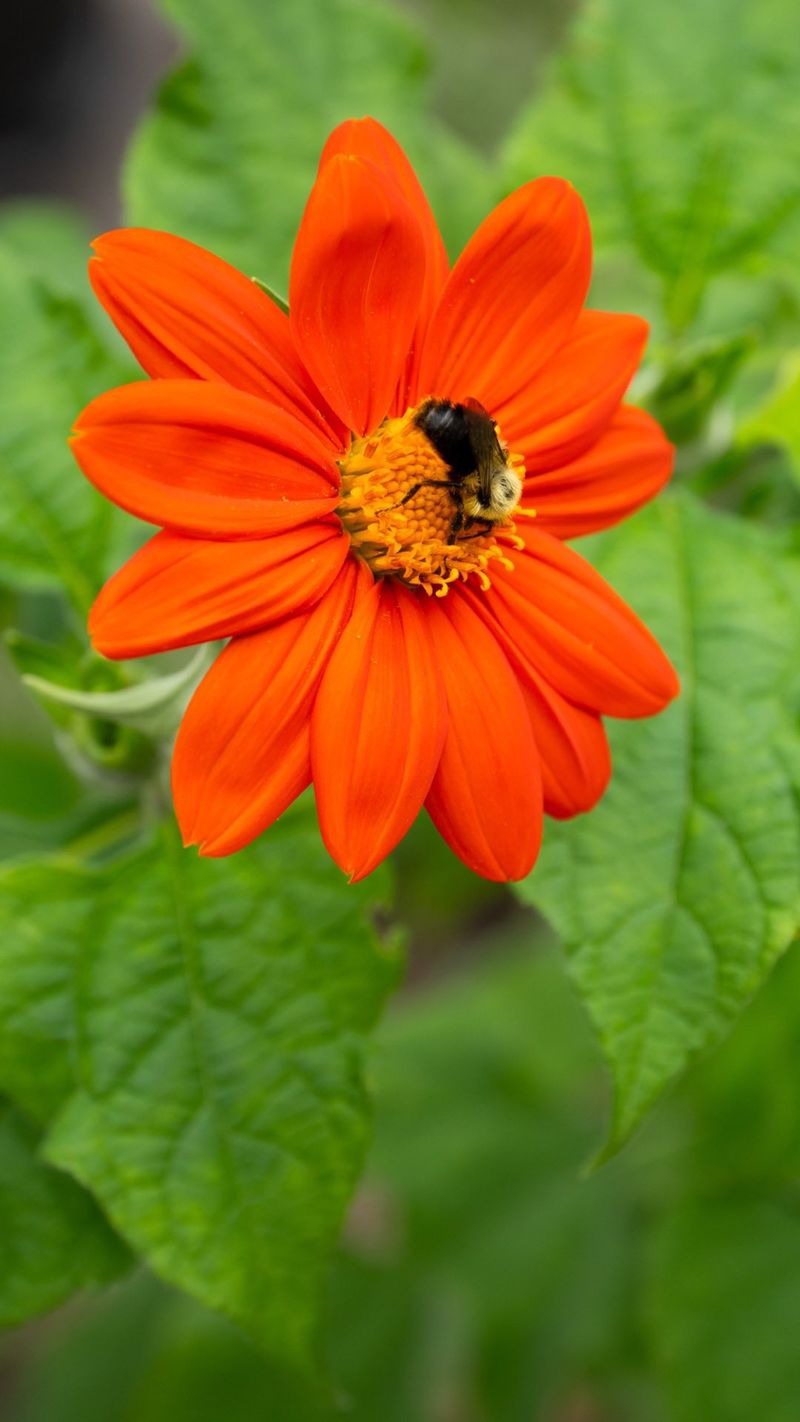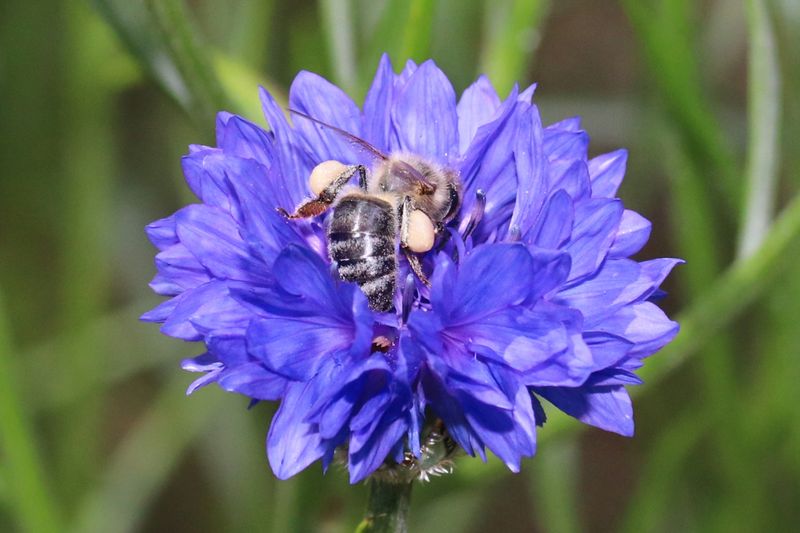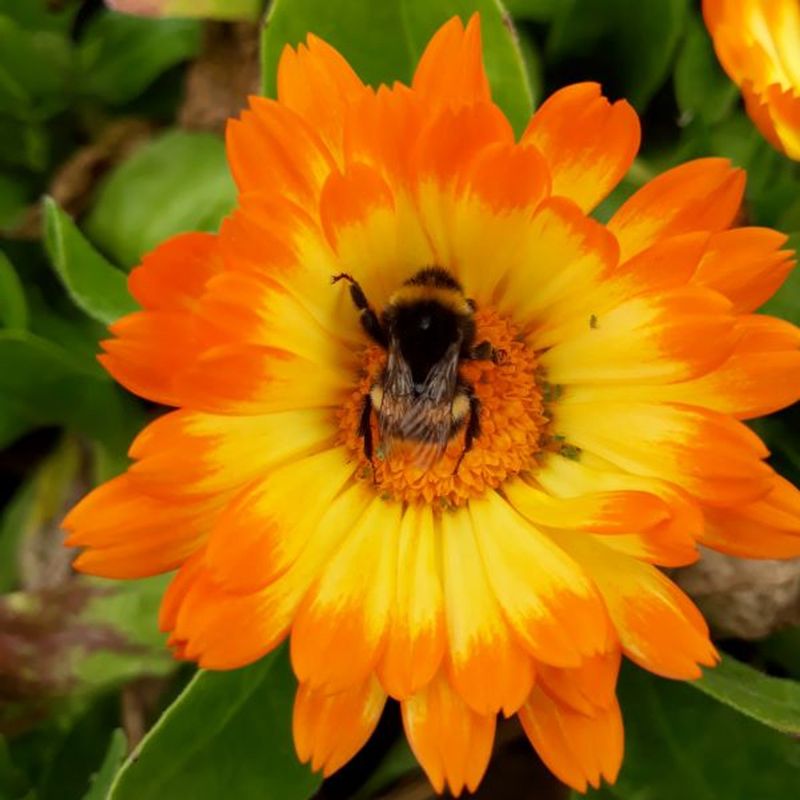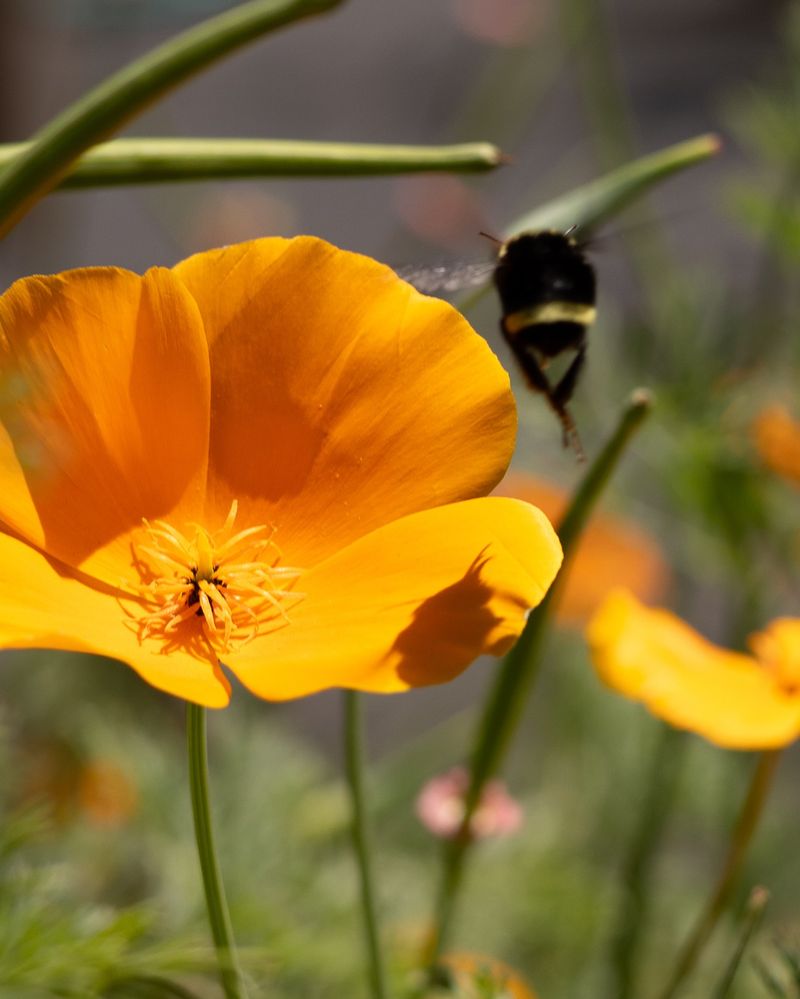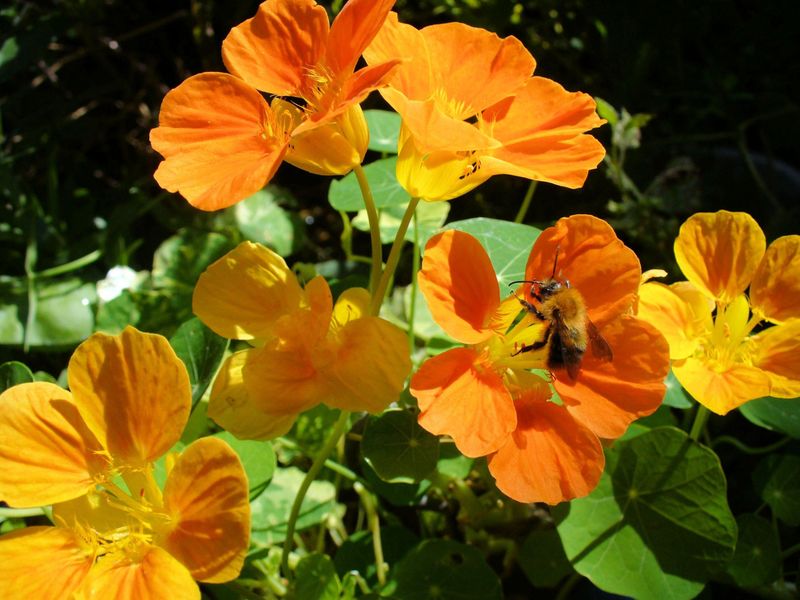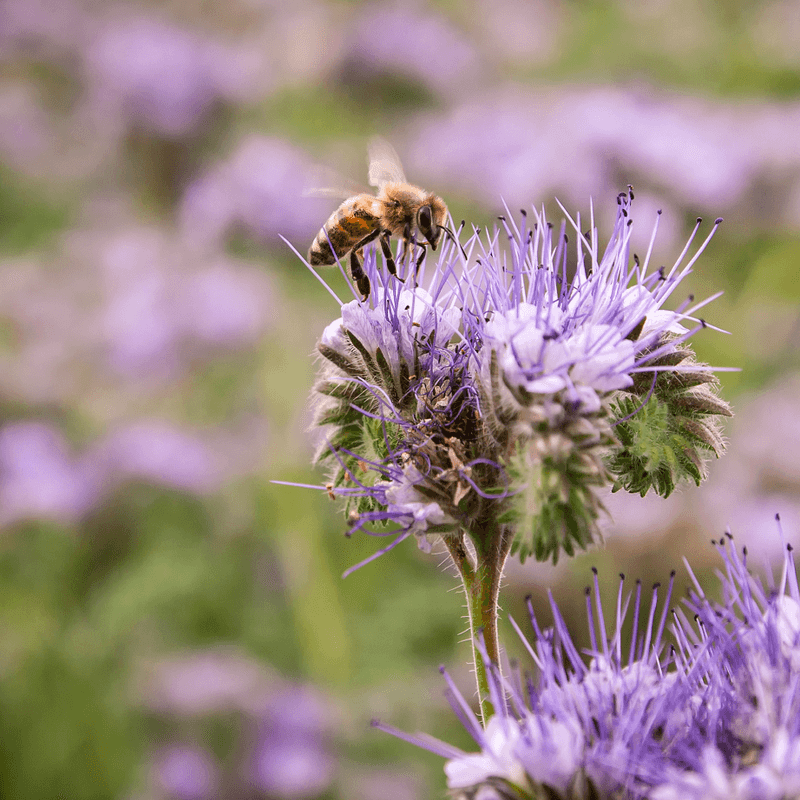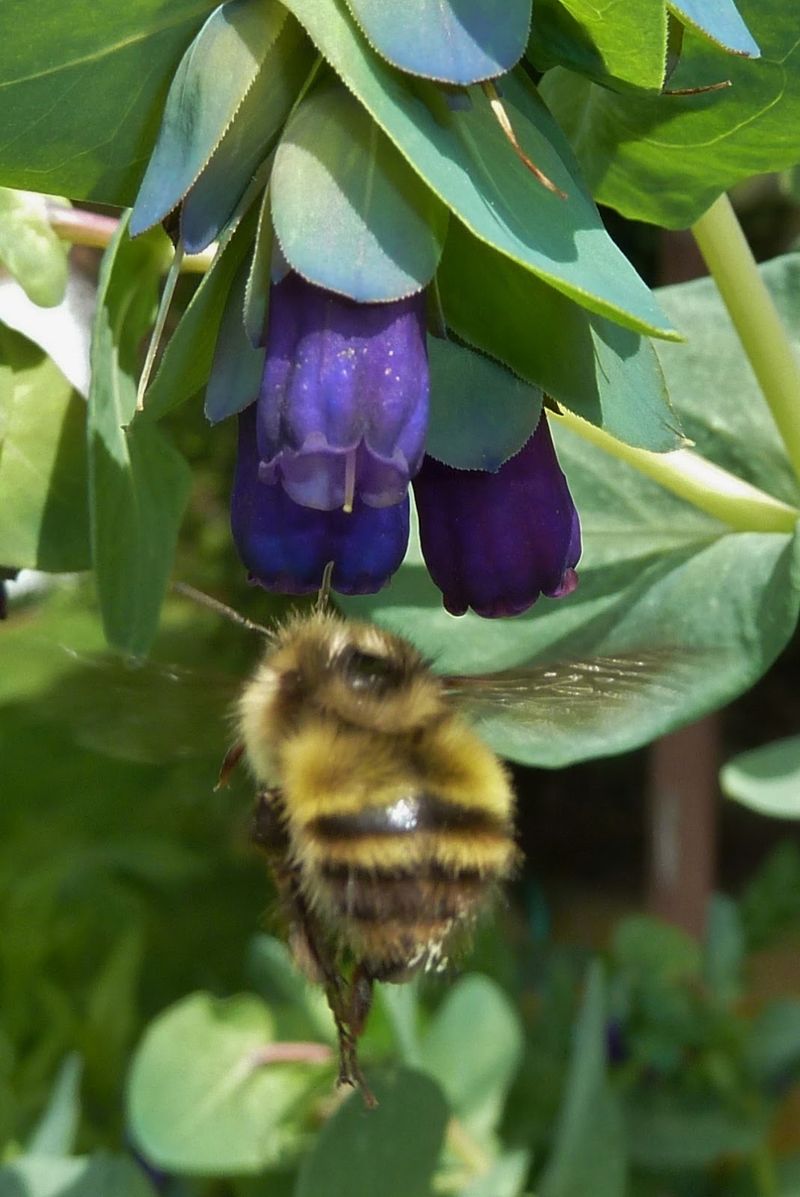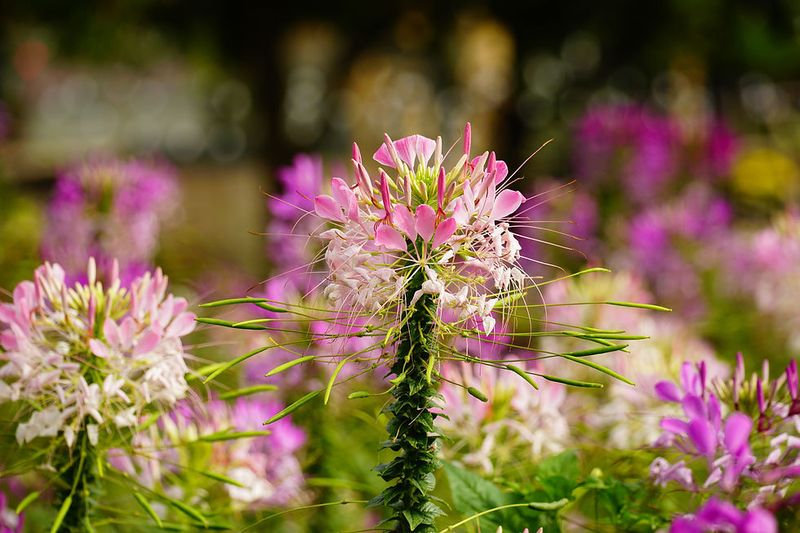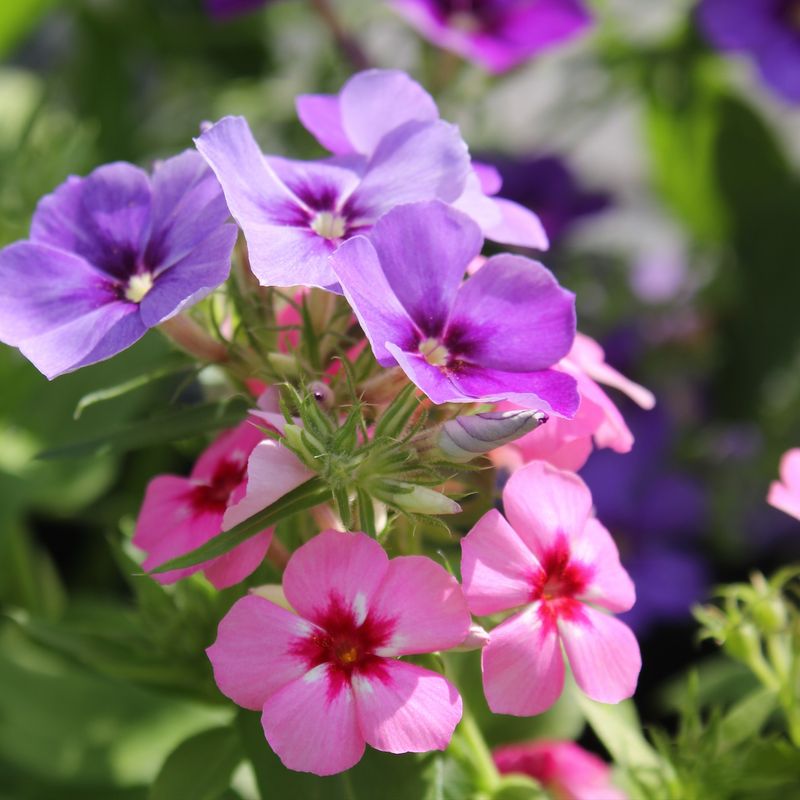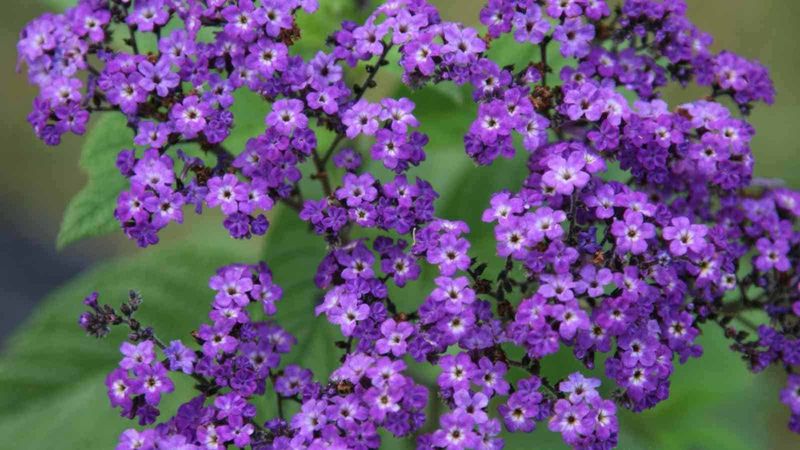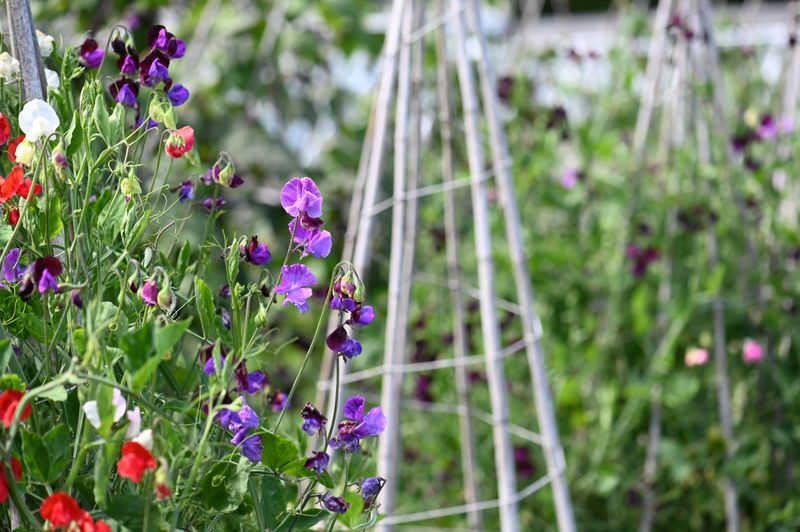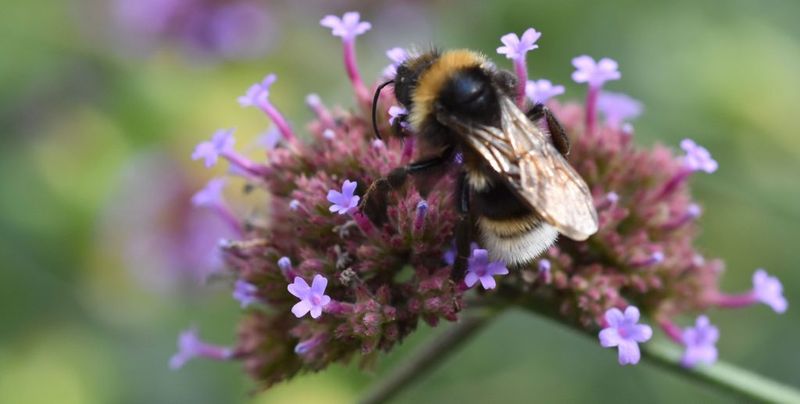Bumblebees play a crucial role in our gardens by pollinating plants and helping them produce fruits and seeds. Planting the right annual flowers can transform your garden into a buzzing paradise that these fuzzy pollinators can’t resist. By choosing bee-friendly annuals, you’ll not only create a beautiful garden but also support these important insects that face declining populations worldwide.
1. Sunflowers (Helianthus annuus)
Standing tall like beacons in the garden, sunflowers offer bumblebees a feast of pollen and nectar. Their large central disks contain thousands of tiny florets, giving bees plenty of landing spots to collect food.
Plant sunflowers in a sunny spot with well-draining soil. The classic varieties grow quite tall, but dwarf options work well in containers or smaller spaces. Bumblebees particularly love the open-faced varieties rather than the pollen-free types bred for cut flowers.
2. Cosmos (Cosmos bipinnatus)
Delicate and daisy-like, cosmos flowers dance in the slightest breeze while attracting bumblebees with their open centers. The simple flower structure makes it easy for bees to access the pollen and nectar.
Available in pinks, whites, and reds, cosmos thrive in poor soil and don’t need much water once established. Their feathery foliage adds texture to gardens, and they’ll bloom from early summer until the first frost if you deadhead regularly.
3. Zinnias (Zinnia elegans)
Bursting with vibrant colors from red to purple, orange to green, zinnias rank among bumblebees’ favorite nectar sources. Their flat landing platforms make feeding easy for these fuzzy visitors.
Heat-loving and drought-tolerant, zinnias perform beautifully in hot summer gardens. Single-flowered varieties attract more pollinators than double-flowered types because they provide easier access to the center. For a constant bee buffet, sow seeds every few weeks for continuous blooms all season.
4. Sweet Alyssum (Lobularia maritima)
Carpet your garden edges with sweet alyssum and watch bumblebees hover from one tiny flower to the next. Despite their small size, these fragrant blooms produce abundant nectar that bees can’t resist.
Sweet alyssum forms low mounds of honey-scented flowers in white, purple, or pink. It grows quickly from seed and often self-sows for years of enjoyment. In cooler climates, this annual blooms continuously from spring through fall, providing reliable food for bumblebees throughout the growing season.
5. Snapdragons (Antirrhinum majus)
Bumblebees perform a special trick with snapdragons – their weight opens the hinged flower lips that remain closed to smaller insects. This gives them exclusive access to the sweet nectar inside!
Available in nearly every color except blue, snapdragons add vertical interest to gardens. They prefer cooler weather and often bloom heavily in spring and fall. The taller varieties may need staking, but dwarf types stay compact and work well in containers.
6. Salvia (Salvia splendens)
Bumblebees buzz with excitement around salvias, which produce nectar-rich tubular flowers perfectly shaped for their long tongues. The vibrant spikes of red, purple, or blue blooms stand out in any garden.
Annual salvias thrive in full sun and average soil, blooming from early summer until frost. Their strong stems rarely need staking, making them low-maintenance choices. Beyond attracting bees, salvias have the bonus of being deer-resistant and drought-tolerant once established.
7. Borage (Borago officinalis)
Borage’s star-shaped blue flowers hang downward, creating the perfect landing position for bumblebees who cling to them while feeding. The nectar replenishes quickly, encouraging bees to return throughout the day.
Beyond being a pollinator magnet, borage leaves are edible with a cucumber-like flavor. The plant self-seeds readily and grows quickly in sunny spots. Its bristly stems and leaves may look rough, but they create a charming, cottage-garden feel that complements many garden styles.
8. Mexican Sunflower (Tithonia rotundifolia)
Fiery orange blooms atop tall stems make Mexican sunflowers stand out in any garden. Bumblebees flock to these daisy-like flowers for their abundant pollen and sweet nectar.
Growing up to 6 feet tall, Mexican sunflowers create a dramatic backdrop for other garden plants. They thrive in hot, dry conditions and poor soil, making them perfect for challenging spots. Unlike their name suggests, they’re not related to true sunflowers but offer similar benefits to pollinators.
9. Cornflower (Centaurea cyanus)
Cornflowers feature stunning blue blooms (though pink, white, and purple varieties exist too) that bumblebees spot from far away. Their nectar-rich centers provide a sweet reward for visiting pollinators.
Also known as bachelor’s buttons, cornflowers grow easily from seed sown directly in the garden. They prefer full sun but tolerate partial shade in hot climates. Picking the flowers regularly encourages more blooms, making them excellent for both pollinator gardens and cut flower arrangements.
10. Calendula (Calendula officinalis)
Often called pot marigold, calendula’s cheerful orange and yellow daisy-like flowers attract bumblebees with their abundant pollen. The flat, open blooms provide easy landing pads for these fuzzy pollinators.
Calendula thrives in cool weather, often blooming from spring until the heat of summer, then returning for an encore in fall. Beyond attracting bees, these edible flowers can be used in salads or as a natural dye. They self-seed readily, ensuring your garden will have returning blooms year after year.
11. California Poppy (Eschscholzia californica)
Golden orange California poppies create a stunning display while offering bumblebees plentiful pollen from their prominent central stamens. These cup-shaped flowers open in sunshine and close at night or during cloudy weather.
Drought-tolerant and easy to grow, California poppies thrive in poor, well-draining soil. They self-seed enthusiastically if allowed to set seed. While the classic orange is most common, newer varieties come in reds, pinks, and even cream colors, all equally attractive to bumblebees.
12. Nasturtium (Tropaeolum majus)
Nasturtiums produce funnel-shaped flowers in fiery shades of red, orange, and yellow that guide bumblebees straight to their nectar-rich centers. Their lily pad-like leaves create an attractive backdrop for the blooms.
Both flowers and leaves are edible with a peppery taste similar to watercress. Nasturtiums come in climbing, trailing, or bush varieties to suit any garden space. They prefer poorer soil – too much fertilizer produces lush leaves but fewer flowers, which means less food for hungry bumblebees.
13. Phacelia (Phacelia tanacetifolia)
Known as bee’s friend or purple tansy, phacelia produces curling lavender-blue flower spikes that bumblebees simply can’t resist. The nectar content is so high that bees will often ignore other flowers when phacelia is in bloom.
Quick-growing from seed, phacelia flowers within 6-8 weeks of planting. Farmers often use it as a cover crop specifically to attract pollinators. Its fern-like foliage adds texture to the garden, and the unusual curled flower heads create visual interest even before they fully open.
14. Cerinthe (Cerinthe major ‘Purpurascens’)
Cerinthe’s unusual blue-purple bracts surround small tubular flowers filled with nectar that bumblebees access with their long tongues. The plant’s silvery-blue foliage adds to its otherworldly appearance.
Also called honeywort, cerinthe grows quickly from directly sown seeds. It prefers well-draining soil and full sun to partial shade. Though not as well-known as some other annuals, cerinthe makes a striking addition to gardens and attracts bumblebees throughout its long blooming period from late spring through summer.
15. Cleome (Cleome hassleriana)
Nicknamed spider flower for its spidery stamens, cleome produces large, airy flower heads in pink, purple, or white that bumblebees visit repeatedly. The tall plants create a dramatic backdrop in gardens while serving as bee magnets.
Cleome can reach 3-4 feet tall, blooming from early summer until frost. Once established, it tolerates heat and drought with ease. Though the plants have small thorns on their stems, they’re worth including for their architectural value and bee-attracting powers.
16. Annual Phlox (Phlox drummondii)
Clusters of star-shaped flowers in pink, red, purple, and white make annual phlox a colorful magnet for bumblebees. Their sweet fragrance attracts pollinators from across the garden.
Unlike their perennial cousins, annual phlox stay relatively compact at 6-12 inches tall. They bloom prolifically from late spring through summer if deadheaded regularly. For best results, plant them in mass groupings where their candy-colored blooms create a carpet of flowers that bumblebees will visit repeatedly.
17. Heliotrope (Heliotropium arborescens)
Vanilla-scented purple flower clusters make heliotrope irresistible to bumblebees and humans alike. The tiny flowers group together in rounded heads, providing multiple feeding opportunities for visiting pollinators.
Also called cherry pie plant for its sweet fragrance, heliotrope performs best in morning sun with afternoon shade in hot climates. While technically a tender perennial, it’s usually grown as an annual in most regions. The deep purple varieties seem most attractive to bumblebees, though white and pale lavender options exist too.
18. Nicotiana (Nicotiana alata)
Flowering tobacco produces clusters of tubular blooms perfectly shaped for bumblebees’ long tongues. The flowers release their sweet fragrance in the evening, attracting pollinators during the cooler hours.
Available in white, pink, lime green, and red, nicotiana adds both color and scent to gardens. The taller varieties reach 3-4 feet, while dwarf types stay under 18 inches. Plant them near patios or windows where you can enjoy their jasmine-like fragrance on summer evenings alongside the gentle buzz of visiting bumblebees.
19. Sweet Pea (Lathyrus odoratus)
Fragrant sweet peas produce butterfly-like flowers in a rainbow of colors that attract bumblebees with their sweet nectar. Their delicate tendrils climb supports, creating vertical interest in the garden.
Plant sweet peas in early spring as they prefer cool weather for best blooming. Regular harvesting encourages more flowers, making them perfect for cut flower arrangements. Heirloom varieties often have the strongest fragrance, which both bumblebees and gardeners appreciate.
20. Verbena (Verbena bonariensis)
Tall, airy stems topped with small purple flower clusters give verbena a floating appearance in the garden. Bumblebees flock to these nectar-rich blooms from summer until frost.
Despite its delicate appearance, verbena is surprisingly drought-tolerant once established. It self-seeds readily in many gardens, returning year after year. The see-through quality of its stems makes it perfect for planting among other flowers, creating layers of interest for both gardeners and bumblebees.

